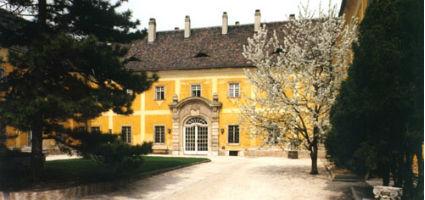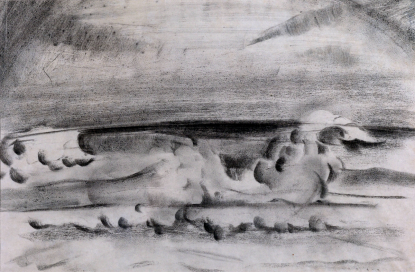2024. April 20. Saturday
Museum Kiscell - Municipal Picture Gallery Budapest - Budapest
 |
Address: 1037, Budapest Kiscelli utca 108.
Phone number: (1) 388-7817, (1) 250-0304
E-mail: fovarosi_keptar@mail.btm.hu
Opening hours: 01.04-31.10.: Tue-Sun 10-18
01.11-31.03.: Tue-Sun 10-16 |
The exhibition has closed for visitors.
2015.04.16. - 2015.09.05.
Museum tickets, service costs:
|
Ticket for adults
|
900 HUF
|
|
|
Ticket for students
|
450 HUF
|
|
|
Group ticket for students
|
350 HUF
|
|
|
Ticket for pensioners
|
450 HUF
|
|
|
Ticket for families
|
1300 HUF
|
/ family
|
|
Photography
|
500 HUF
|
|
|
Video
|
1500 HUF
|
István Farkas was a figure of paramount importance in modern European painting between the world wars it was with his individual voice as a painter and graphic artist. From the age of 13 to his death at the age of 57 he never stopped painting, drawing and doing graphics. Two of his early drawings can be seen in this exhibition.

Farkas was diligent and he drew a lot at the Art Colony of Nagybánya, as did he later in his life wherever he lived. He did, studies, wrote notes, we have some of his diary fragments, documents, and not to mention his demanding, independent works. In his Dalmatian charcoal drawing series from between 1921-1923 we can see tramps, deprived, poor people lingering. The charcoal drawing with café scenes in Budapest portray Budapest citizens, who were forerunners of his figures of his post-1930 personifying a slowly disappearing lifestyle. In the meantime, he kept sketching nude models. István Farkas painted the pictures in the period from 1930 to 1934 that made him the painter we know now.Dramatic tension in the works from between 1930-34. Depressing colours, unspecified objects, shapes, disembodied, immaterial figures. Characters of a Farkas scene are sometimes elusive creatures, spirits, other times grossly provocative, threatening creatures baring danger, doom. Farkas became an existentialist painter - preserving reality as well as expressive and surreal elements. Farkas became an irrational painter, absurd, while never leaving spectacle behind, neither our earthbound spirit.
The writer Lajos Kassák wrote the following of him in 1942: 'Farkas is not a collector of freak things, but everything will turn into peculiarly individual in his hand. "He made a lot of mistakes: he commissioned many of his fellow artists but also purchased art from them. Many of them became Judas. From the beginning of the fifties thanks to them Farkas was ignored for a long time in Hungarian art. In Szigliget he had the Villa Farkas built. He tried to retire, did a lot of sketches and studies of the land, family members and still lives in his studio. He also did some important paintings there. In 1941-once again his art flourished, proven by the works 'Something Happened' and 'Composition'. The moderate amount of colour he applied confused the forms, virtually nothing feels plastic. It could have been the beginning of a new era, again something very different. Wickedness, malice, envy: his handwritten name turned up on a journalist's list. He threw out his last message from a railroad car in Kecskemét: "If human dignity is so humiliated, it is not worth living." According to eye witnesses, he voluntarily faced the gas chamber in Auschwitz. He was only 57 years old.
Katalin S. Nagy

Farkas was diligent and he drew a lot at the Art Colony of Nagybánya, as did he later in his life wherever he lived. He did, studies, wrote notes, we have some of his diary fragments, documents, and not to mention his demanding, independent works. In his Dalmatian charcoal drawing series from between 1921-1923 we can see tramps, deprived, poor people lingering. The charcoal drawing with café scenes in Budapest portray Budapest citizens, who were forerunners of his figures of his post-1930 personifying a slowly disappearing lifestyle. In the meantime, he kept sketching nude models. István Farkas painted the pictures in the period from 1930 to 1934 that made him the painter we know now.Dramatic tension in the works from between 1930-34. Depressing colours, unspecified objects, shapes, disembodied, immaterial figures. Characters of a Farkas scene are sometimes elusive creatures, spirits, other times grossly provocative, threatening creatures baring danger, doom. Farkas became an existentialist painter - preserving reality as well as expressive and surreal elements. Farkas became an irrational painter, absurd, while never leaving spectacle behind, neither our earthbound spirit.
The writer Lajos Kassák wrote the following of him in 1942: 'Farkas is not a collector of freak things, but everything will turn into peculiarly individual in his hand. "He made a lot of mistakes: he commissioned many of his fellow artists but also purchased art from them. Many of them became Judas. From the beginning of the fifties thanks to them Farkas was ignored for a long time in Hungarian art. In Szigliget he had the Villa Farkas built. He tried to retire, did a lot of sketches and studies of the land, family members and still lives in his studio. He also did some important paintings there. In 1941-once again his art flourished, proven by the works 'Something Happened' and 'Composition'. The moderate amount of colour he applied confused the forms, virtually nothing feels plastic. It could have been the beginning of a new era, again something very different. Wickedness, malice, envy: his handwritten name turned up on a journalist's list. He threw out his last message from a railroad car in Kecskemét: "If human dignity is so humiliated, it is not worth living." According to eye witnesses, he voluntarily faced the gas chamber in Auschwitz. He was only 57 years old.
Katalin S. Nagy
